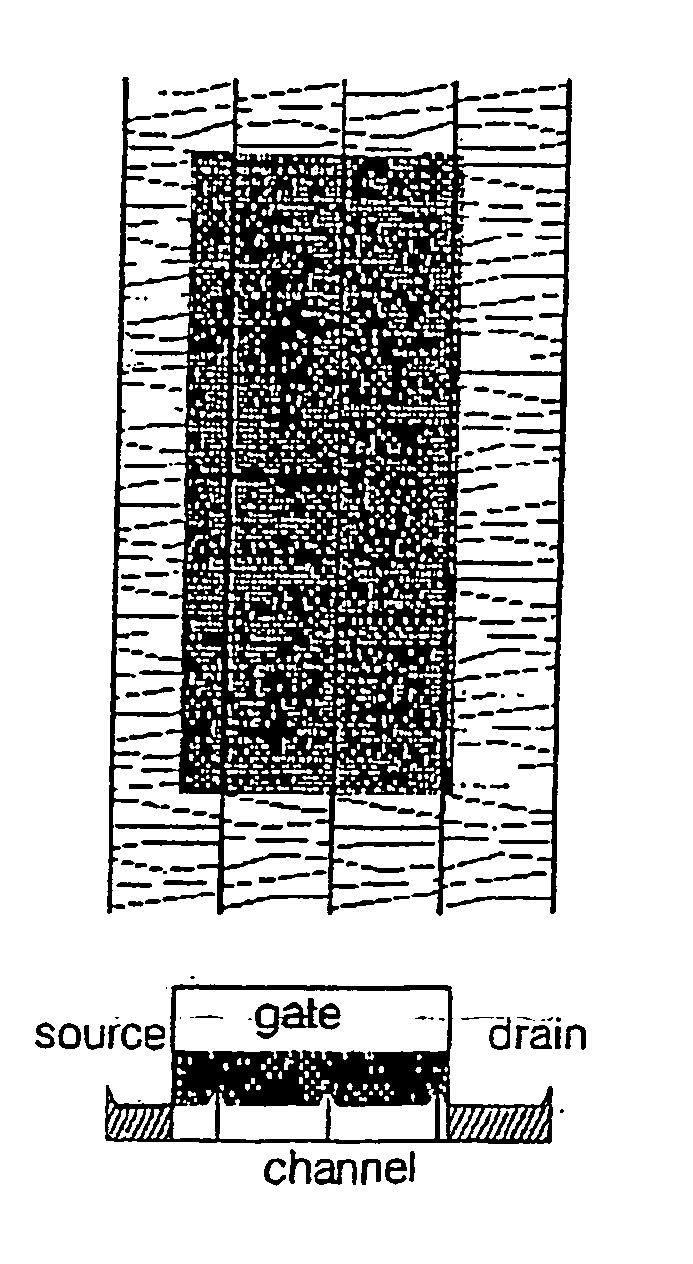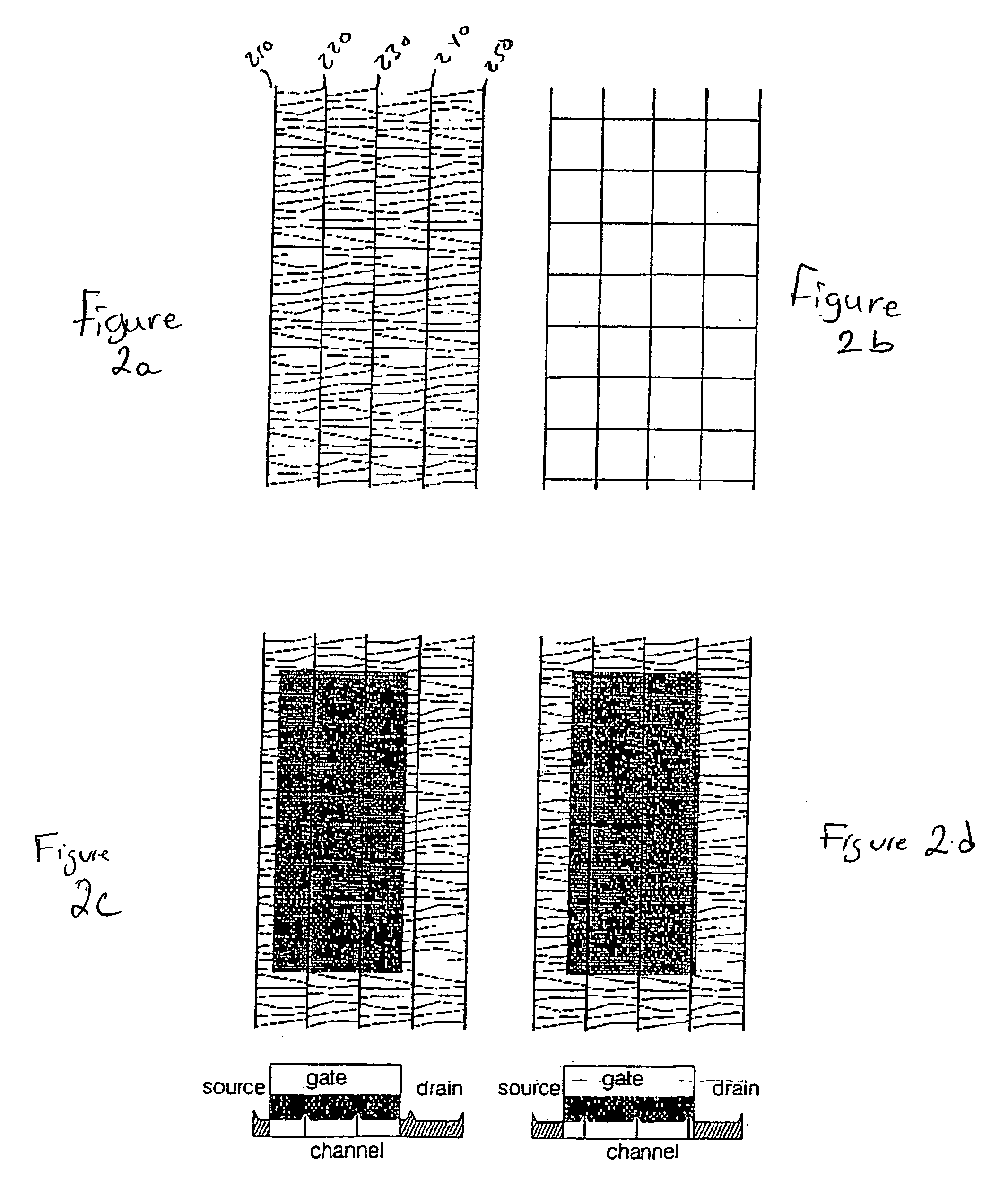Polycrystalline tft uniformity through microstructure mis-alignment
a microstructure and polycrystalline technology, applied in the direction of polycrystalline material growth, crystal growth process, chemically reactive gas, etc., can solve the problems of large device-to-device non-uniformity, increase complexity and thus cost, and difficult to reduce the non-uniformities of semiconductor films and improve the performance characteristics of such films
- Summary
- Abstract
- Description
- Claims
- Application Information
AI Technical Summary
Benefits of technology
Problems solved by technology
Method used
Image
Examples
Embodiment Construction
[0027] Referring again to FIGS. 2a-b, exemplary processed silicon thin films using the prior art SLS system of FIG. 1 are shown. In particular, FIG. 2a illustrates a sample processed by irradiating a region with a single excimer laser pulse, micro-translating the sample, and irradiating the region with a second excimer laser pulse. While the following exemplary description of the invention will be with respect to this so-called “2-shot” material as an example, those skilled in the art will appreciate that the present invention is more broadly applicable to silicon thin films that have been processed with n-shot and 2n-shot SLS techniques.
[0028] In accordance with the present invention, active channel regions of TFTs are deliberately tilted relative to the periodic microstructure of the processed thin film. Such tilting may be accomplished by tilting the placement of the channel region itself on the processed thin film, or alternatively, by fabricating a thin film during SLS process...
PUM
 Login to View More
Login to View More Abstract
Description
Claims
Application Information
 Login to View More
Login to View More - R&D
- Intellectual Property
- Life Sciences
- Materials
- Tech Scout
- Unparalleled Data Quality
- Higher Quality Content
- 60% Fewer Hallucinations
Browse by: Latest US Patents, China's latest patents, Technical Efficacy Thesaurus, Application Domain, Technology Topic, Popular Technical Reports.
© 2025 PatSnap. All rights reserved.Legal|Privacy policy|Modern Slavery Act Transparency Statement|Sitemap|About US| Contact US: help@patsnap.com



